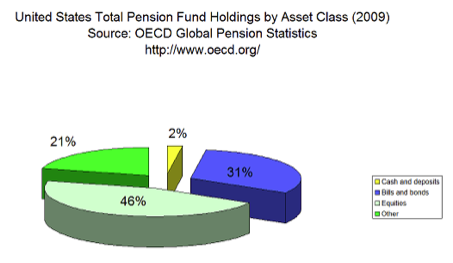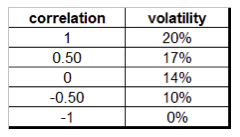1. You can use bonds as collateral in your futures account.
Many Futures Commission Merchants (FCMs) will allow you to use U.S. government securities as collateral in your futures account. Some FCMs will even accept municipal bonds, foreign currencies, and foreign sovereign debt. However, it is important to note that a “haircut” will be taken on the market value of your securities, depending on their perceived riskiness. For example, an FCM might allow you to use 95% of the value of U.S. government securities to satisfy the exchange’s margin requirement but might accept only 75% of the value of foreign sovereign debt.
2. You can use leverage in your futures account without borrowing money.
One benefit to trading futures contracts is using leverage without borrowing money. A futures contract is a contract to buy or sell something at some time in the future. You must have enough cash or securities on deposit to satisfy the exchange’s margin requirement, but it is not necessary to borrow the total value of the futures contract. Each instrument is different, but for the E-mini S&P 500, as of October 8th, 2010, the initial margin requirement is $5625, while the dollar value of one contract is approximately ten times that amount.
3. It is possible to reduce the volatility of an equities portfolio by adding a managed futures program that is negatively correlated with equities.
As you can see in the pie chart below, in 2009, the typical U.S. pension fund had almost half of its assets invested in equities. If you have a large percentage of your portfolio allocated to equities, then you should consider diversifying part of your portfolio into a managed futures program that is negatively correlated with the equities markets.

It is better to diversify into negatively correlated investments than uncorrelated investments.
If your current portfolio is positively correlated with the S&P 500, you can reduce the volatility in your portfolio by adding an investment that is negatively correlated with the S&P 500. Many managed futures programs are designed to negatively correlate with the S&P 500. For example, the correlation between our Short-Term Managed Futures Program and the S&P 500 is -0.46.
We would like to briefly describe how a negative correlation between the investments in a portfolio can reduce the portfolio’s overall volatility. For example, assume you have a portfolio of two investments, each with a historical average return of 10% and a volatility of 20%. Assume also that each investment has a normal return distribution. The chart below shows how the volatility of your overall portfolio will change depending on the correlation between its components.

If the two investments are perfectly correlated, the volatility of your portfolio will be 20%. If the correlation between the two investments is -0.50, then the volatility of your portfolio will be only 10%. A hypothetical portfolio would be half as risky with the same average return. In other words, investing in a portfolio with two negatively correlated components can make the same 10% average return while taking half as much risk.
4. You can use leverage while trading futures contracts in your IRA account.
When you buy or sell a futures contract, you are not buying or selling property. Instead, you are entering into a contract to buy or sell something at some time in the future. You are not allowed to incur debt to finance property in an IRA account, so you cannot purchase securities on margin in an IRA account. But because a futures contract is an executory contract and “does not constitute an acquisition of the underlying commodities or any incurrence of indebtedness in connection therewith,” 1 you can use leverage while trading futures contracts in your IRA account.
5. There are tax benefits to trading futures contracts.
Title 26, Section 1256 of the United States Code provides for any gain or loss on a futures contract to be treated as a short-term capital gain or loss “to the extent of 40 percent of such gain or loss,” and a long-term capital gain or loss “to the extent of 60 percent of such gain or loss.”
In other words, even if you trade futures contracts on a short-term basis, 60% of your gains will be taxed at long-term capital gains rates. This might be an essential consideration if you are trading a short-term strategy.
1 LR 8044023
Monterosso Investments is a CFTC-registered Commodity Trading Advisor (CTA) and Commodity Pool Operator (CPO). We trade a systematic short-term managed futures program negatively correlated with the S&P 500.
PAST PERFORMANCE IS NOT NECESSARILY INDICATIVE OF FUTURE RESULTS. INVESTING IN FUTURES CONTRACTS INVOLVES RISK AND MAY NOT BE SUITABLE FOR ALL INVESTORS. THE PROGRAM IS A SPECULATIVE INVESTMENT DESIGNED FOR SOPHISTICATED INVESTORS WHO CAN BEAR A LOSS OF THEIR CAPITAL CONTRIBUTIONS AND WHO CAN ACCEPT A HIGH DEGREE OF RISK IN THEIR INVESTMENTS. AN INVESTMENT IN THE PROGRAM IS SPECULATIVE AND INVOLVES A SUBSTANTIAL RISK OF LOSS. PLEASE REFER TO THE MONTEROSSO INVESTMENTS DISCLOSURE DOCUMENT FOR COMPLETE INFORMATION.
Photo by Parrish Freeman on Unsplash
